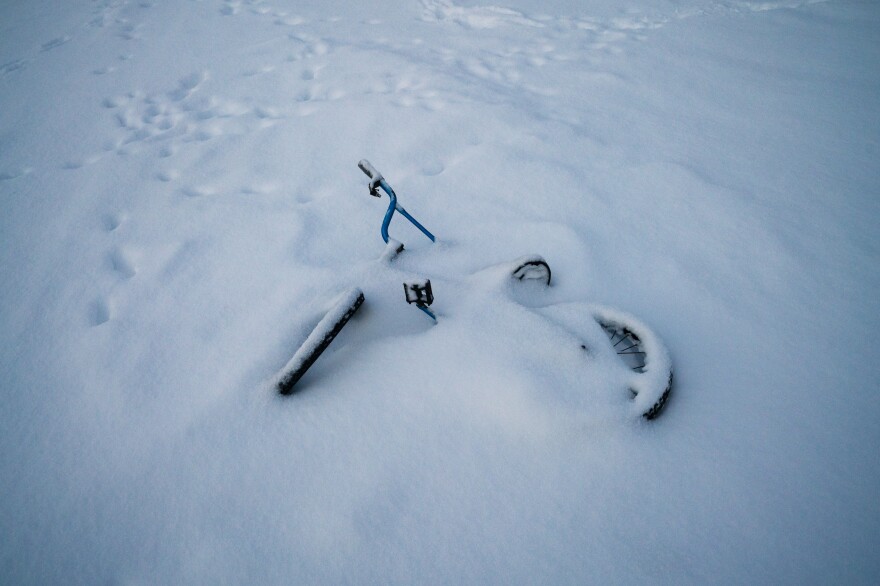Snow days are one of the true joys of childhood and this winter, heavy snowfalls kept some South Dakota students out of class for more days than usual.
In the Dell Rapids School District, the school calendar lost nine days to winter weather and didn’t use virtual learning to keep kids on schedule.
As a result, Superintendent Summer Schultz said they have sprinkled make-up days through the last few weeks of school.
“We made up the 16th of March for spring break, we made up the Monday of Easter Monday, and then we are only tacking on two days at the end of the year,” Schultz said.
Schultz said a flexible school calendar is something districts and parents, need to prepare for.
“I mean, this year it just hit some school districts a little bit harder, but I believe our plan was pretty manageable," Schultz said. "We understand we could have a year with two snow days or 22, so we kind of prepare for something in the middle. Being transparent on what it could possibly be, should it be a winter like this winter, that helps so parents can plan accordingly.”
That plan includes the way time is allocated over a school year. In an email response, representatives from the state Department of Education said while state law sets a minimum amount of instructional time, individual districts determine their schedules and whether they’ll employ virtual learning.
Grades one through five must have no fewer than 875 hours in a school year. For grades six through twelve, that number reaches 962-and-a-half hours.
In general, schools begin the year with more scheduled time than the legal minimum, but how to dole out the extra time when needed is another question. At the Dakota Valley School District in North Sioux City, Superintendent Tonia Warzecha said those minimum time requirements are always competing with the reality of weather conditions.
“We have to meet the standards set forth in codified law, so I can’t ever go below that," Warzecha said. "But I will say beyond that and ahead of that is the safety of my students, family and staff. I put that first and foremost. If I don’t believe the roads or the weather conditions are safe enough for young drivers, our families and our staff, that’s my primary concern.”
While Dakota Valley is only adding a single day to the school calendar, Warzecha said it all relates to timing.
“The first three snow days occurred in the first semester," Warzecha said. "So, particularly at the high school level, when we have some courses that are one semester long, does adding three days to the end of the year really recoup those days for those courses? The answer is no. If those three days we missed in the first semester had been missed in the second semester, I likely would have chosen to make those days up.”
With each district comes unique challenges, from transportation to distance learning. In Pierre, district Superintendent Kelly Glodt said this has been the worst winter in 16 years on the job.
“Most years we have no snow days because we don’t have bussing, we reimburse parents to bring their kids to school," Glodt said. "Parents just keep their kids home if where they live they aren’t able to get in safely. A few years back we had what was a record for us when we had five snow days. This year we had nine snow days.”
Glodt said his district did not use any virtual instruction for those snow days. While distance learning was embraced during COVID, he isn’t convinced of its practicality long-term.
“No matter how good the teacher is, no matter how good the students are... even though you do on Zoom have the opportunity to ask questions, but boy, to keep your entire class on-task like they would be, that’s pretty challenging,” Glodt said.
Glodt said he is convinced in-person learning is the path moving forward. That’s a sentiment echoed by many districts across the state, which have widely elected to continue with traditional snow days using make-up days added to the calendar as opposed to virtual learning.
While virtual learning is expected to play a big role in the future, it’s not a cure-all to scheduling challenges according to Rob Monson, executive director of the School Administrators of South Dakota.
“So, you will have schools of people who say we need to advance this and make this better for everyone, and others who are saying let’s slow the roll a little bit here and let’s talk about what is best for the students that are in our charge,” Monson said.
He added that virtual learning isn’t always the most effective path.
“There is no replacement for in-person learning," Monson said. "That’s really what most educators would say – there just is no replacement. Especially when you get down into those lower grades when the technology isn’t in their hands, they’re not taking it home.”
Now that makeup days have been added to school calendars and schedules are being formalized, districts across the state can begin to look beyond the winter storms to the final quarter of the school year.


